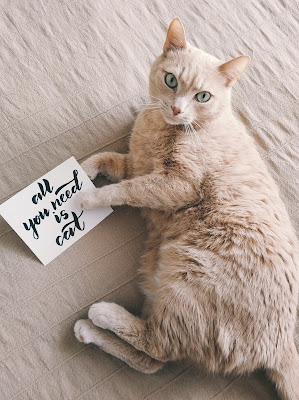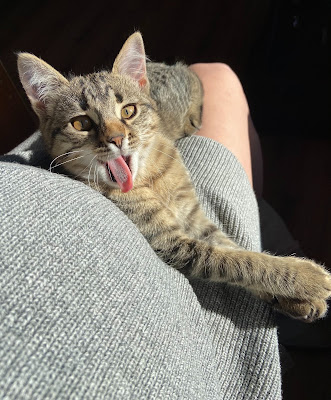15 Basic Tools You Will Need To Learn Training Your Cat
Once you follow your cat and can determine what mood they are in and if they are cooperative and ready to spend some time interacting with you, the next step is to boldly go where few cat owners have gone before and start with a basic training program.
How Can You Train a Cat? Is Going To Change Your Pet Passions.
In short, yes, you can. It is significant to not think of training a cat the same as you would train a dog. You typically will not get the same level of obedience and response to your commands, however social cats that love human attention and interaction are actually comparatively easy to train with a bit of patience, a good sense of humor and a big supply of tasty cat treats.
Basically, cat training is frequently like teaching a very adolescent child. You don't expect kids to instantly know how to tie their shoes; preferably you praise them for providing their shoes, placing them on, and then work up towards the lacing. Preparing a cat by rewarding successive approximations is also the best method and in reality, you are literally shaping the behavior to get closer and closer to exactly what you want.
You also don't ask cats to repeat the behavior multiple times in one session. Unlike dogs, cats will typically do a trick once, get a treat, and then they are ready to do something else of their choosing. Repetitive training is not a good option in working with your cat.
Cats can be prepared to follow several chief commands with the easiest obtain the "Come" command. Cats will rapidly absorb the sound of their name and will come on call to you, even if they are actively doing something else. Preparing your cat to sit, lie down, and even fetch is also not difficult, however, you have to take your individual cat's personality and natural behavior into account.
Cats can be trained to walk on a leash or even to be tethered in your yard, although they should never be left on a tether unsupervised, as there is habitually a safety risk. Often in cities with restrictions on cats off of the property, this is a more attractive option than hoping they won't climb your fence or keeping them in a small run in a yard. In addition, cats are very intelligent and will quickly learn a variety of words including "treat", "dinner" and "outside."
Positive Reward Training
There is only one way that you can successfully train your cat and that is by focusing on what he or she is doing right and merely ignoring when they do the wrong thing. If you use any type of negative training or punishment, your cat will simply disengage from the training session and you will be left with a full pocket of treats and a cat that won't come near you.
Certain reward training, following the elementary NILF principles, is the extremely most attractive option in working with your cat. NILF or Nothing In Life is Free training that is used in working with almost any type of animal and it also works well with people. This positive training method requires the trainer to ask the animal, in this case, the cat, to do something before they get what they want, which is the treat.
The key component to this training is that the reward or treat must be something that the cat really, dearly loves and is restricted from the cat's diet except for training times. Often small pieces of boiled chicken, tuna flavored cat treats, or other commercially prepared treats are the best option since they are very small and easy to keep with you.
Simple Commands For Your Cat
Getting started in training your cat means that you need to be observant of your pet's behavior. If he or she runs to greet you at the door, be sure to have a small treat when you walk through the door and call "Come to Princess" (assuming, of course, your cat is named Princess.) as you walk in, then give the cat the treat when she gets to you and spend some time petting and playing with her. At this point, you have not really "taught" anything. The cat would have done the same behavior even if you didn't call or give a treat. However, she will start associating a word pattern "Come to Princess" with an action on her part that results in a tasty reward.
Once you have repeated this process, several days in a row try using the same command when you are in another room, have a treat ready, and be prepared with the reward and attention when the cat arrives. If you also call her at mealtimes or when you are ready to curl up and watch a movie with your pet, you will be astonished at how quickly she learns the command. When he or she is coming every time to your call, you can make the treats more random and don't provide one every time.
Once your cat is coming on command, it is relatively understandable to instruct them to sit on command. The first step is to call the cat to you, but this time doesn't provide a treat immediately, hold it in your hand, just above and in front of your cat's nose. When they stretch out their neck to receive the treat, move your hand in a straight line back towards the center of the cat's head, just between the ears. This will cause your cat to automatically bob their head up and back, which will force its hind end to crouch into the sitting position. As soon as you see the head tilt up and back say "Sit Princess" and as soon as the rump touches the ground, provide the treat.
Keep working at this until the cat is fully placed; keep in mind this may take several days. Only do this once or twice in a row, repetition will just cause the cat to jump up with their front paws at the treat. Before long your cat will be totaling you and sitting down automatically. You can then ask him or her to sit in other rooms and at other times, just be sure to have a treat ready and give her lots of praise when she does the right thing. To move to sit up having the cat sit, then hold a treat just above his head. When he reaches up with his front paws, you can give the command "Up" or "Beg" and provide the treat.
To teach the lie-down command, start from the sitting position, and then put a treat in your fingers just in front of the cat on the floor. He or she will slide down to the ground, provide them the treat, and then if they enjoy it, rub their sides and stomach. With the pleasant association with the stomach rub and the treat, you may even get your cat to roll over!
Teaching your cat is a rewarding experience, but keeps in mind training needs to be done when everything is calm and both you and the cat are in the mood for it.
Thinking Like A Cat
One of the best ways to get to understand your cat is to be able to get out of your human perspective and get into a cat's perspective on the world. If you develop this art, you are well on your way to being an empathetic and enlightened cat owner, able to respond to your cat's needs and behaviors without any hesitation.
Get Into Your Cat's Head.
The best way to learn about your cat and what he or she is all about is to spend some time in quiet observation. Observe what your cat does, what are they interested in and how do they respond to changes in their environment. Once you have a good idea of how they respond and interact, it is easier to decide or predict how they will respond to you and your behavior. It is equally more straightforward to anticipate what may be potential problems within your environment for your cat.
When you are trying to think like a cat, keep in mind that a cat is by nature a hunter, and even though you may want your cat to be friendly and playful, they do have the instincts of their ancestors. Don't assume that a cat will be unaggressive, rather watch and try to learn what triggers aggression, fear, or playfulness in your cat. If you have two or more cats, observing them interact is an intriguing study. Through their play or lack of play, you will soon learn which cat is dominant, which is more submissive, and how compatible they really are with each other.
Keep in mind that cats need to be active and while they may be able to consume an amazing amount of time sleeping in their favorite spot they do need to climb, run and play to stay happy and healthy. Providing the opportunity to do this through playing, providing climbing and scratching areas, or having other pets in the house is all a part of ensuring your cat is both mentally and physically happy and healthy. If your cat is going to be outside, it is also significant to think about safety and how to keep your cat within the confines of your property or living area.











0 Comments
Spams Denied! Ask and Discuss healthy things